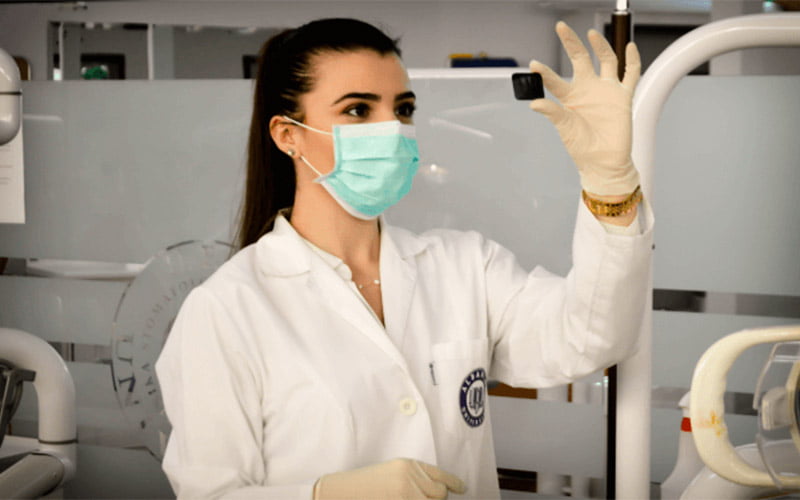Patients are the Healthcare consumers and thus, they expect and demand to be treated as such. Therefore, they are the major force behind technology used to serve them.
EMR, (Electronic Medical Records) can actually cause so many problems if not implemented properly, for example, it can slow down rather than facilitate the work flow, frustrate staff and providers, and may end up doing technology-care rather than patient care.
There is an expected failure when trying to implement new system having complete disconnect between Technology and Medicine. It is certainly easy to get lost with Big Data and thus better to focus on most practical and clinically relevant data to track down, analyze and ultimately incorporate into patient care to be safe, effective and reliable in a standardized fashion. For example, it is clinically useful to have an EKG (Electrocardiogram) tracing to assess Heart Rhythm, then tracing get collected electronically and analyzed to be used in a meaningful way to manage the patients accordingly. For example, Pedometers used to track the number of steps walked and assess fitness level, or having a wrist band with unique Bar Codes to enable uploading patient data into the patient health records via Wi-Fi access.
Other useful use is the remote access for consults or follow up and management of various illnesses as well as caring for chronic diseases or immobile patients. Tele Medicine would be a great tool connecting patients with their trusted providers on 24/7 basis.The critical voice of the physicians to be heard as they give their important input in shaping Digital Medicine and its future success in improving access to effective healthcare delivery. They have to be a part of the conversation and decision making alongside the traditional players including Insurance and Pharmaceutical companies.
There is a real demand for mobile healthcare applications (to manage chronic diseases) with efficiency having a human being as a backup helping patients when a digital service fails to provide patient specific needs. Digital Medicine can help not only the immediate treatment but can predict and prevent various diseases via root- cause analysis. For example, high salt intake is associated with elevated blood pressure especially in the African American population as they seem to be more salt-sensitive. Another example of regular intake of NSAIDs, Non-Steroidal Anti-Inflammatory drugs such as Motrin, Advil, Naprosyn, Aleve and others will certainly lead to Kidney damage, Gastritis, bleeding ulcer, congestive heart failure, salt and water retention, simply avoiding the regular intake of these NSAIDs would prevent all these costly and devastating complications. Similarly, regular intake of steroids would cause Diabetes, salt and water retention, delayed wound healing, osteoporosis resulting in bone fractures and depressed immune system leading to repeated infections. Avascular necrosis of the head of the femur which is a serious complication in those on chronic steroid therapy resulting in collapse of the head of the femur. Tele Medicine is important in device monitoring remotely such as pacemakers, defibrillators, implanted event monitors etc. Digital Medicine will help in various aspects of patient education, wellness and advocacy.
So, Digital Medicine would be advantageous in answering simple, non-emergent questions through customer service center, online portal, chat window, make online appointment, or make a use of a mobile APP. So, the role of Digital Medicine is to improve patient access, customer service, compliance and outcome, but never intended to replace your doctor. We have seen what happened with attempted driver-less cars, it failed big times!
So, digital medicine can help to reach remote and under-served areas due to the remarkable growth of Wireless Technology with cell phones, GPS, WIFI and tablet computers. These computers will be connected via Networks which will allow the sharing of hardware and software data. The data will follow either path of high bandwidth or low bandwidth being wired or wireless. For example, hospitals use fast T1 lines for moving images and also use slow connections for e-mail service. Basic input devices are required including pointing devices like Mouse, microphones, cameras along with scanning devices such as bar-code reader, (magnetic ink character recognition or optical character recognition or radio frequency identification tags. Tele Medicine would be a great tool to serve seniors who cannot ambulate or lack transportation. Also, for those who prefer quick convenient service without taking time off work and drive down to doctor office or Urgent Care or even Emergency Room to sit and wait for long time to be seen and get hit with a big bill to pay! Tele Medicine can help to triage patients as to get the appropriate care setting and possible initial stabilization in many cases.)
To be able to find information, every document will have an address (Uniform Resource Locator) URL, then start browsing to clink on specific links to desired sites. Always for consumers, they have to be aware and thus careful about the authenticity of information and conflict of interest on any site before using that specific site whether educational or commercial. Thus, interoperability is critical in making Tele Medicine meaningful and effective in cost saving and improving health outcome.
Courtesy of Destination Health Magazine
Adel Eldin
MD, FACC, FACP

